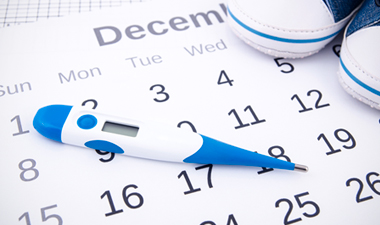Tools for understanding fertility
For most women, simply being aware of your cycle is sufficient to help you time intercourse, and no special tests or tools are needed. The average length of the cycle, counting from the first day of one period to the day before the next period is 28 days. Many women have normal cycles that are a bit longer or shorter than that. Ovulation (the release of an egg, which may then be fertilized for about the next 24 hours) happens 14 days before the menstrual period begins. So for example, a woman with a 28 day cycle will ovulate on day 14, where a woman with a 31 day cycle will ovulate on day 17.

Couples wanting to conceive a child should have intercourse the day of, or the day before the estimated day of ovulation. When a woman has regular and predictable menstrual periods, and each bleeding episode is about the same, the chance that she is ovulating is more than 97%. No testing is needed in this case.
 If testing is needed, or chosen, there are a number of tools available to help you understand your own personal fertility. Gaining this knowledge about your body can help you increase your chances of getting pregnant. Low tech, inexpensive methods can tell you when and whether you are ovulating. These include cervical mucus testing and basal body temperature monitoring. Higher tech (and more expensive) ovulation prediction testing kits can give you very accurate information about when ovulation will occur.
If testing is needed, or chosen, there are a number of tools available to help you understand your own personal fertility. Gaining this knowledge about your body can help you increase your chances of getting pregnant. Low tech, inexpensive methods can tell you when and whether you are ovulating. These include cervical mucus testing and basal body temperature monitoring. Higher tech (and more expensive) ovulation prediction testing kits can give you very accurate information about when ovulation will occur.

